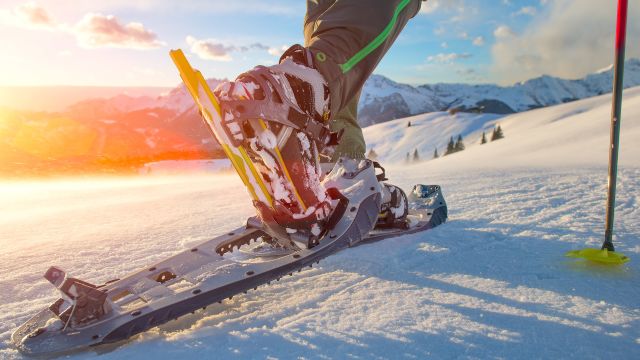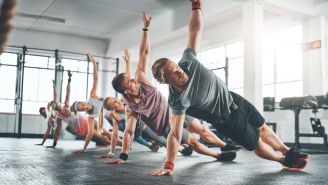Is winter weather disrupting your walking or running routine? Try snowshoeing or cross-country skiing. Both offer all-body and aerobic workouts with many benefits.
Inexpensive and convenient
Most communities that enjoy regular snow have ski and snowshoe trails. Once you know the sport well, you can take your own equipment to any nearby golf course or park—both snowshoes and cross-country skis are lightweight and inexpensive compared to downhill skis.
In many regions, you can drive to a cross-country ski and snowshoe center, or to downhill ski resorts or state parks. A full-service center, however, will offer lessons, groomed trails and equipment, all for much less than you would spend at a downhill resort.
Nature enhances your health
Many snowshoe or cross-country trails are hiking trails that will bring you up close to trees, and frozen ponds and streams. Being outdoors in a natural setting enhances the mental lift you get from exercising, according to a study by Stanford researchers published in the June, 2015 issue of Landscape and Urban Planning.
Get a full-body workout
Snowshoeing and cross-country skiing will help you work your muscles in a different way. Snowshoeing is easier to learn than cross-country skiing, but both are gentle on the knees, while strengthening your legs, and helping to improve your balance. Using your poles makes it a full body workout and increases your calorie burn per hour.
Follow these common sense principles to stay safe and comfortable:
Get a lesson. Both sports are relatively easy to learn, but do require that you move differently than you would on a city street. Downhill skiers, keep in mind: Cross-country skiing will require that your body unlearn some of its habits, so you might have a harder time on your first day than someone who has never skied before.
Get properly fitted. As a beginner, try different styles of boots when you rent and see what you prefer before you invest. Every time you go out, take the time to be sure your equipment is adjusted to your needs.
Start slow! Don’t blaze your own path on a golf course until you really know what you’re doing. Even if you’re an ace hiker, don’t assume you can spend as much time on snowshoes or skis as you would spend hiking in the summer. You’ll be using your muscles differently.
Maintain your temperature. On cold days, always bring a buddy. You’ll need a synthetic layer close to the skin to draw sweat away, then a layer of warm fleece or wool. Put a waterproof windbreaker on last. Stay away from cotton, even socks, because it can get wet.
If you have asthma, it might be triggered in cold weather. Wear a facemask, scarf or balaclava to cover your mouth; exhaling will moisten the air you breathe in.
While you’re moving, notice if you’re getting hot. Take off your hat first; a large percentage of body heat is lost through your scalp
Bring water and energy boosts. Drink before you’re thirsty. Dehydration from sweat can cause fatigue. Nuts and dark chocolate are good choices for on-the-go snacks.
Keep track of the time and nightfall. Unlike downhill ski centers, most snowshoe and cross-country centers don’t light the trails at night.
Want more? Have new articles from Ornish-certified clinical team members sent straight to your inbox!






